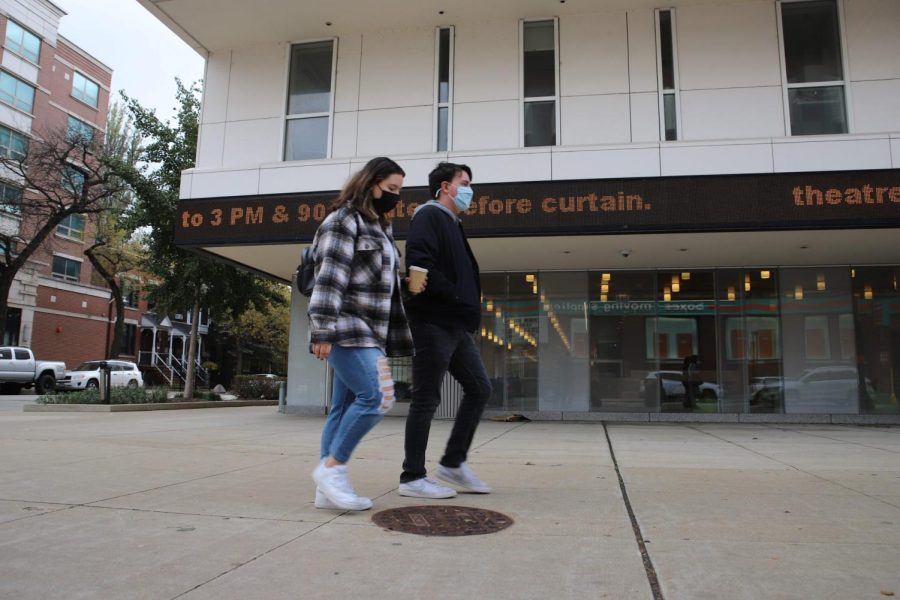The impact of virtual learning on students in higher education
Throughout the Covid-19 pandemic and the transition to remote learning, students around the world had to adjust to changes in their education as they carried out their studies at home.
Even though schools have been reopened for partial or even completely in-person learning, students are still trying to regain educational losses from the last two years.
For Grand Valley State University student Alexandria Borraccio, adjusting to online learning while transitioning from high school to college during the height of the pandemic was a challenge.
“After high school, I decided to defer for a semester because I was paying tuition just to sit in bed and take classes,” she said. “I found myself losing my drive and interest in school, which has been hard to regain since coming back to campus.”
At the university level, online learning posed many challenges such as decreased motivation and productivity, an uptick in mental health issues and for some, insufficient resources for a successful education at home.
“My mental health took a toll last year since I was supposed to be a freshman in college but was stuck taking four university-level classes from my bedroom,” Borraccio said. “I feel like my college experience has been taken away from me and life still hasn’t gone back to normal.”
Michael Kofoed, an economics professor at the U.S Military Academy at West Point, and his co-authors recently released a study conducted on West Point students looking at online learning during the Covid-19 pandemic. Because West Point students have little control over their academic schedules, he was able to randomly assign students to in-person or online modes of education.
From the study, Kofoed found final grades for online students dropped by 0.215 standard deviations, driven mostly by academically at-risk students. This number is statistically significant considering 0.2 standard deviations can mean the difference in whether a student gets a B+ or a B- depending on their current grade in the course.
“Everytime I ran the regressions, I couldn’t believe how big the gap was,” he said.
When Kofoed conducted a follow-up survey, the online students reported having more difficulty concentrating on their coursework and felt less connected to their instructors than the students that attended class in-person.
In addition to negatively affecting student’s grades, online learning increases the amount of educational inequalities. While some students have access to resources like reliable internet, libraries, and at-home support systems, low income families often can’t provide the same assistance. Parents who work in labor-intensive jobs that required them to work during the pandemic would have been unable to monitor their kids’ online education.
“The question is: If West Point cadets, who are pretty resilient, still do worse, what do you think the average, third grade, minority student in the South Side of Chicago is going to do with not very good internet connection?” Dr. Kofoed said.
According to the Household Pulse survey conducted by the U.S. Census Bureau between Dec. 29 and Jan. 10, over 10 million college students in the United States said they were not planning on taking classes this term due to the coronavirus pandemic.
Borraccio, a sophomore at Grand Valley majoring in cardiovascular sonography, says she feels that online classes have not prepared her for her future career and now has difficulty keeping up with in-person classes.
“As someone majoring in science and health, being in-person and engaging in hands-on learning is imperative and can’t be done properly online,” she said.
The world still faces uncertainty about the virus with the onslaught of new variants and fear of another lockdown if hospitals get overrun. Even with extra precautions in place, students are still struggling with transitioning back to in-person classes amidst the pandemic.
“In some ways, it was hard for some students to come back,” Professor Howard Rosing, executive director of Steans Center at DePaul University, said. “Last term, it seemed like there were a lot of absences for some students, and I don’t recall ever having that many in the past.”
Covid-19 has undoubtedly had lasting effects on students across the world, from making the transition to virtual learning, living in a constant state of fear for their loved ones and themselves and dealing with mental health issues during a pandemic. Still, the long-term effects of virtual learning remain unclear.
“It’s going to be a while until we know the real impact of the pandemic,” Rosing said. “In some ways, the world is becoming more virtual, and I think it’s going to evolve into where learning online will help students manage a hybrid workplace in the future.”







